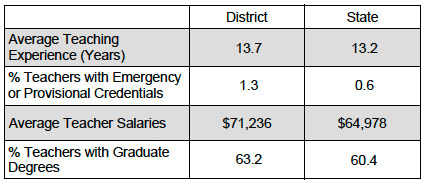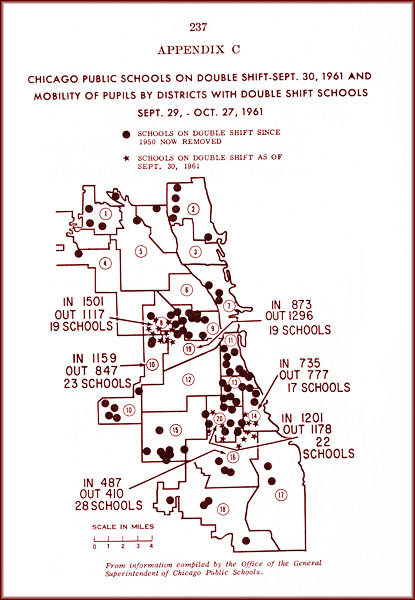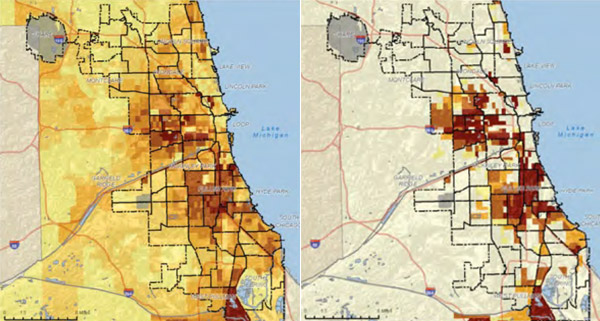While salaries have made up a fairly minor part of the negotiations, it still dominates the rhetoric, or at least the national rhetoric. Here's a helpful breakdown that goes farther to explain why CPS teachers have a $71,000 average salary, via ISBE:

Compared to teachers statewide, Chicago teachers are a bit more experienced and a bit more likely to have a graduate degree—and given how CPS's lane and step system works, that means they're likely to make more money. A teacher with 13 years of experience in CPS and a bachelor's makes $76,464; with a master's, $80,937; with a doctorate, $87,680 (not including the pension pickup).
Which brings me to this, from David Brooks: "The Chicago school system is a classic case of a bloated, inefficient Economy II organization. The average Chicago teacher makes $76,000 a year in a city where the average worker makes $47,000 a year." (I think, though I'm not sure, that the 71/76 salary difference is a matter of the pension pickup, which ranges from $3,309 to $6,208; the pension pickup is not part of salary, but it is part of total compensation.)
The average worker also doesn't have a bachelor's (which CPS teachers have to have) and a graduate degree (which 63 percent have). Nationwide, few industries have that kind of educational attainment. Current BLS data only gives a few industries in which 60 percent of workers have graduate degrees: besides education, they're concentrated in math (mathematicians, statisticians), law, science, non-doctor medical jobs like therapists and nurse practicioners, and a handful of more arcane white-collar jobs like curators and clergy.
In Chicago, 63 percent of teachers have a graduate degree; 13 percent of the population 25 and over has a graduate degree. The median income for men with a graduate degree in Chicago is $73,282; for women, $56,729. It doesn't make any sense to compare CPS teachers to the "average" worker, because the hiring standards are wildly different, and they're competing for a small slice of the population.
(NB: Carol Felsenthal has beef with Brooks over different issues.)
Brooks also writes: "Over the past 50 years, spending on K-12 education has also skyrocketed. In 1960, Americans spent roughly $2,800 per student, in today’s dollars. Now we spend roughly $11,000 per student. This spending binge has not produced comparable gains in student outcomes. Education productivity is down, too."
It is true that teacher salaries are much higher in Chicago now than they were in the 1960s. But most of those gains came during the 1960s, when Chicago's comparatively high salaries, for major cities, were set: "In 1966, a starting salary of $5,500 was the equivalent of $38,358 in 2011 dollars. By 1972, the starting salary of $9,570 was $51,739 in 2011 dollars—the highest of the nation's ten largest cities."
Educational spending in the 1960s in Chicago also brings up a sore old subject:
By 1960 Chicago's African American population had surpassed 800,000, almost a quarter of the city's total—up from 14 percent just 10 years earlier. Vast areas of the South and West Sides became densely populated ghetto neighborhoods, and racial segregation was high. Schools in these areas were overcrowded, and some ran on double shifts, with children attending for just half a day. In poor inner-city areas the annual turnover of students exceeded 50 percent, and in some instances it approached 100 percent. Schools in these neighborhoods often fell into disrepair. “The broken windows were there,” wrote one young teacher at DuSable High School in the early seventies, “along with the torn window shades and broken desk tops, appendages to the badly lighted, worn central hallway.”
In the 1960s, Chicago attracted national attention with a school boycott:
“Burnside was so crowded that students went to school on a double shift, some starting in the early morning, while others started much later,” Burroughs recalls of the school that had 1,600 students, twice its 865-pupil capacity. “Classes were even held in the auditorium, on the stage and in auditorium seats.”
The original fight for a longer school day in Chicago was in the 1960s—when the city was combating overcrowding with double-shift, four-hour schools. The concentration of those double-shift schools should be unsurprising to anyone familiar with the geography of poverty in Chicago:

Because it looks an awful lot like this map of geographically persistent poverty (left; census tracts by percent of population below 150 percent of the poverty threshold; right, number of census years in poverty, 1970-2009 being the most).

Maps: U.S. Civil Rights Commission, Joint Center on Political and Economic Studies



